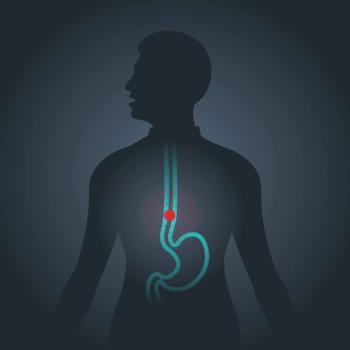
Lutathera Slows Disease Progression in Midgut Neuroendocrine Tumors
A novel drug, 177Lutetium-DOTATATE (Lutathera), significantly lowered the risk for disease progression or death among patients with previously treated, advanced midgut neuroendocrine tumors.
A novel drug, 177Lutetium-DOTATATE (Lutathera), significantly lowered the risk for disease progression or death among patients with previously treated, advanced midgut neuroendocrine tumors, according to the phase III results of the NETTER-1 trial.
Compared with patients treated with octreotide LAR 60 mg, treatment with 177Lutetium-DOTATATE resulted in about an 80% decreased risk for progression or death, according to data presented at a presscast ahead of the 2016 American Society of Clinical Oncology (ASCO) Gastrointestinal Cancers Symposium, held January 21–23 in San Francisco (
“While there have been few available systemic treatment options for patients progressing under somatostatin analogues, Lutathera has a major therapeutic benefit for this patient population,” said study author Jonathan R. Strosberg, MD, a medical oncologist at the Moffitt Cancer Center in Tampa, Florida.
According to Strosberg, many patients with midgut neuroendocrine tumors receive first-line treatment with a somatostatin analog such as octreotide. However, there are currently limited second-line therapeutic options for patients whose disease progresses on this treatment.
This phase III trial tested 177Lutetium-DOTATATE, a peptide receptor radionuclide therapy that combines hormone therapy and radiotherapy. The study included 230 patients with inoperable, progressive disease and randomly assigned them to four administrations of 177Lutetium-DOTATATE 7.4 GBq every 8 weeks or octreotide LAR 60 mg every 4 weeks.
At data analysis, 23 patients in the 177Lutetium-DOTATATE group had confirmed disease progression or death compared with 67 patients in the octreotide group. Median progression-free survival, the trial’s primary endpoint, was not yet reached among patients assigned the novel therapy compared with 8.4 months among patients assigned octreotide LAR (95% CI, 5.8–11 months; P < .0001). This equated to a 79% reduction in risk for progression or death among patients assigned 177Lutetium-DOTATATE (HR, 0.21; 95% CI, 0.13–0.34).
“With roughly a year and a half duration of follow-up thus far, we can see in the Kaplan Maier curve that the expected median progression-free survival is likely to be longer than 3 years in the experimental arm,” Strosberg said.
Significantly more patients assigned 177Lutetium-DOTATATE had tumor responses compared with patients assigned octreotide (18% vs 3%; P = .0008). There was one complete response and 17 partial responses in the 177Lutetium-DOTATATE arm compared with 3 partials responses in the octreotide arm.
An interim analysis of overall survival data showed 13 deaths had occurred among patients assigned 177Lutetium-DOTATATE compared with 22 in the octreotide group (P = .0186); however, Strosberg noted that in an interim analysis the threshold for statistical significance is .001, meaning this difference is not significant, but is suggestive of an improvement in overall survival.
Commenting on these results Smitha Krishnamurthi, MD, ASCO Spokesperson and the moderator of the presscast said, “Lutetium DOTATATE showed impressive ability to slow the growth of midgut neuroendocrine tumors that progressed on somatostatin analogue therapy. Also notable was that Lutetium DOTATATE resulted in a response rate of 18% in these tumors which are typically unresponsive to systemic therapy.”
Newsletter
Stay up to date on recent advances in the multidisciplinary approach to cancer.




















































































